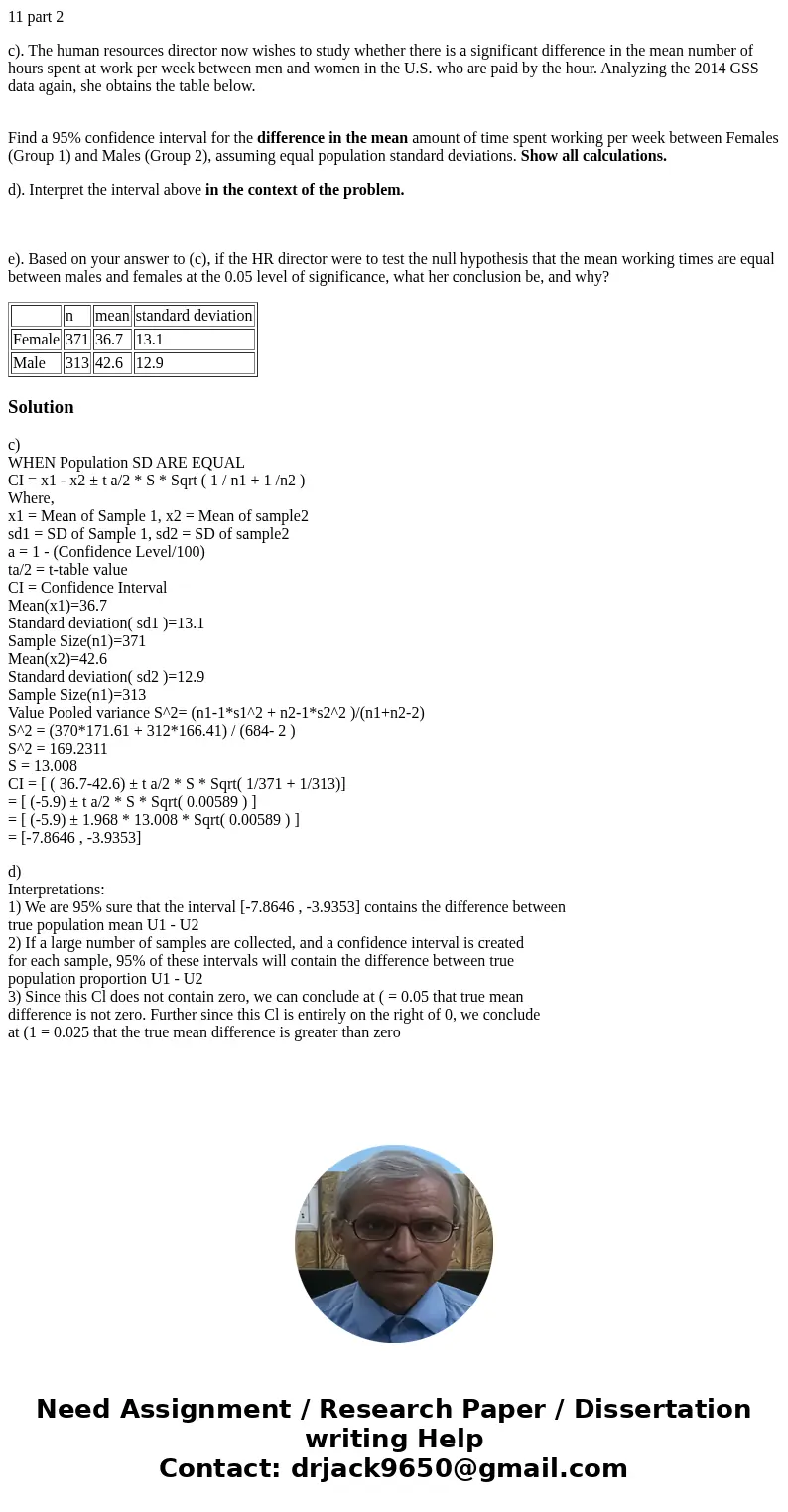11 part 2 c The human resources director now wishes to study
11 part 2
c). The human resources director now wishes to study whether there is a significant difference in the mean number of hours spent at work per week between men and women in the U.S. who are paid by the hour. Analyzing the 2014 GSS data again, she obtains the table below.
Find a 95% confidence interval for the difference in the mean amount of time spent working per week between Females (Group 1) and Males (Group 2), assuming equal population standard deviations. Show all calculations.
d). Interpret the interval above in the context of the problem.
e). Based on your answer to (c), if the HR director were to test the null hypothesis that the mean working times are equal between males and females at the 0.05 level of significance, what her conclusion be, and why?
| n | mean | standard deviation | |
| Female | 371 | 36.7 | 13.1 |
| Male | 313 | 42.6 | 12.9 |
Solution
c)
WHEN Population SD ARE EQUAL
CI = x1 - x2 ± t a/2 * S * Sqrt ( 1 / n1 + 1 /n2 )
Where,
x1 = Mean of Sample 1, x2 = Mean of sample2
sd1 = SD of Sample 1, sd2 = SD of sample2
a = 1 - (Confidence Level/100)
ta/2 = t-table value
CI = Confidence Interval
Mean(x1)=36.7
Standard deviation( sd1 )=13.1
Sample Size(n1)=371
Mean(x2)=42.6
Standard deviation( sd2 )=12.9
Sample Size(n1)=313
Value Pooled variance S^2= (n1-1*s1^2 + n2-1*s2^2 )/(n1+n2-2)
S^2 = (370*171.61 + 312*166.41) / (684- 2 )
S^2 = 169.2311
S = 13.008
CI = [ ( 36.7-42.6) ± t a/2 * S * Sqrt( 1/371 + 1/313)]
= [ (-5.9) ± t a/2 * S * Sqrt( 0.00589 ) ]
= [ (-5.9) ± 1.968 * 13.008 * Sqrt( 0.00589 ) ]
= [-7.8646 , -3.9353]
d)
Interpretations:
1) We are 95% sure that the interval [-7.8646 , -3.9353] contains the difference between
true population mean U1 - U2
2) If a large number of samples are collected, and a confidence interval is created
for each sample, 95% of these intervals will contain the difference between true
population proportion U1 - U2
3) Since this Cl does not contain zero, we can conclude at ( = 0.05 that true mean
difference is not zero. Further since this Cl is entirely on the right of 0, we conclude
at (1 = 0.025 that the true mean difference is greater than zero

 Homework Sourse
Homework Sourse